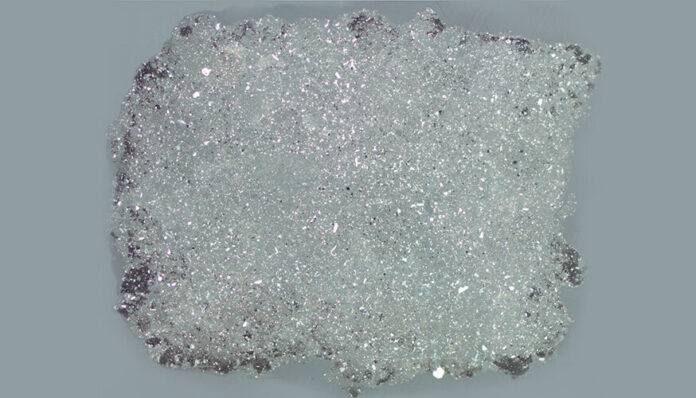An international team led by a researcher from Lawrence Livermore National Laboratory (LLNL) discovered that one specific particle on the asteroid Ryugu can shed light on its parent body’s unaltered initial materials.
The Japanese Aerospace Exploration Agency launched the spacecraft Hayabusa2 to the asteroid 162173 Ryugu in December 2014. The sample-return capsule successfully landed back on Earth in December 2020, carrying pristine pieces of Ryugu with it.
Ryugu is an ancient fragment of a larger asteroid that formed very early in the history of the solar system, shortly after the sun’s birth. Asteroid samples provide a unique opportunity to determine not only the material from which the solar system formed, but also how the solar system evolved.
The solar system evolved from a massive cloud of swirling gas and dust left over from previous generations of stars. This “stardust” consists of nanometer to micrometre sized particles that are incorporated into the formation of planetary bodies such as Ryugu.
Ming-Chang Liu (Nuclear and Chemical Sciences Division, LLNL) secondary ion mass spectrometrist and cosmochemist discovered that one particle (dubbed C0009) differs mineralogically from other Ryugu particles because it contains a small amount (0.5 vol%) of anhydrous silicates. Other particles studied thus far contained more phyllosilicate and carbonate minerals, implying that Ryugu underwent extensive aqueous alteration on its parent body, similar to the rare mineralogically altered but chemically primitive CI chondrites (a group of rare stony meteorites). The findings were published in Nature Astronomy.
The data, obtained through isotopic analysis of magnesium-rich olivine and pyroxene, “provide strong evidence that amoeboid olivine aggregates and magnesium-rich chondrules, two types of high-temperature objects formed in the solar nebula, accreted into Ryugu’s parent body,” according to Liu, the paper’s first author.
The team examined the oxygen isotope measurements of Ryugu’s anhydrous silicates, which have significant implications for Ryugu’s origins and, by extension, the parent asteroids of CI chondrite meteorites.
“The oxygen isotope data, combined with grain morphology, allow us to infer the original materials incorporated into Ryugu’s protolith because they reveal a potential relationship between anhydrous silicates in C0009 and other known high temperature components found in non-CI carbonaceous chondrites,” Liu explained.

